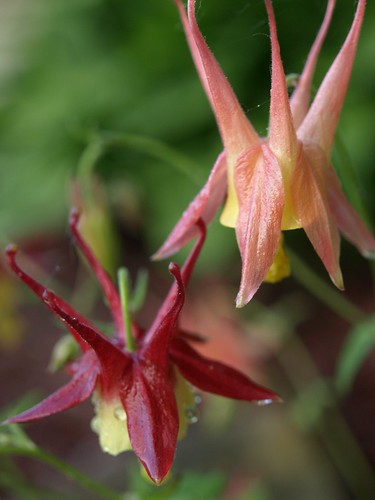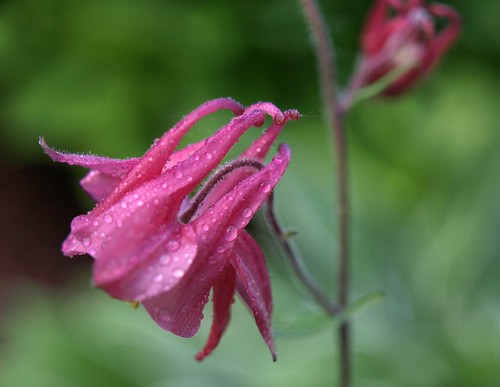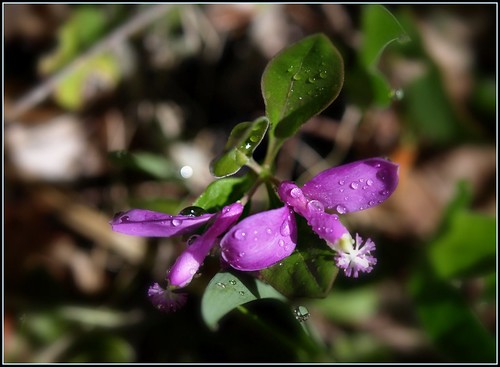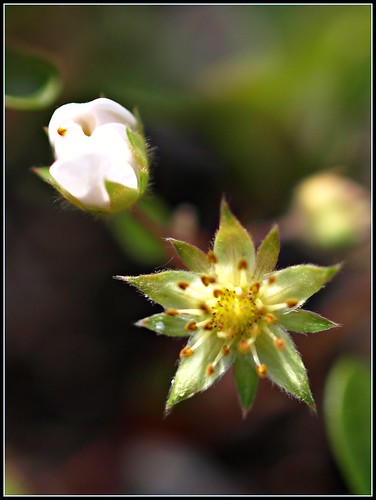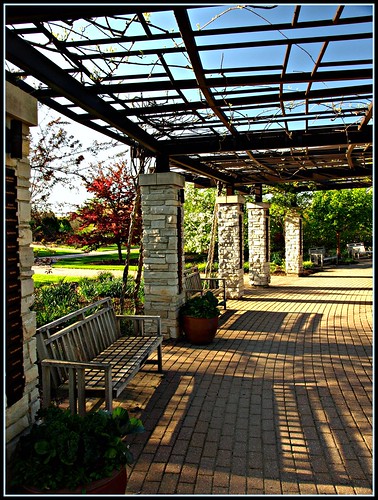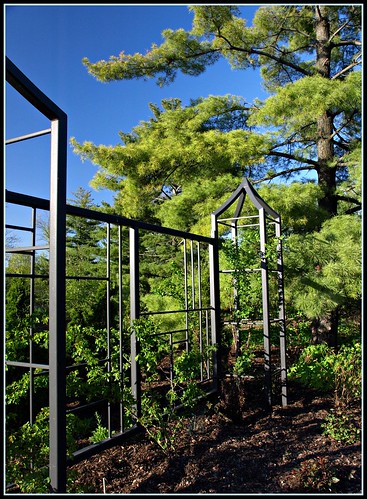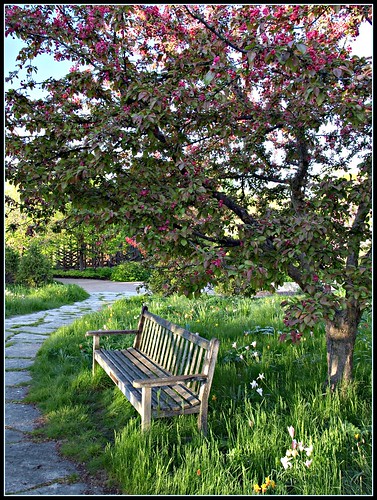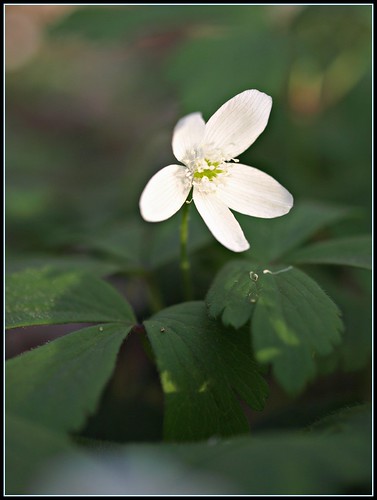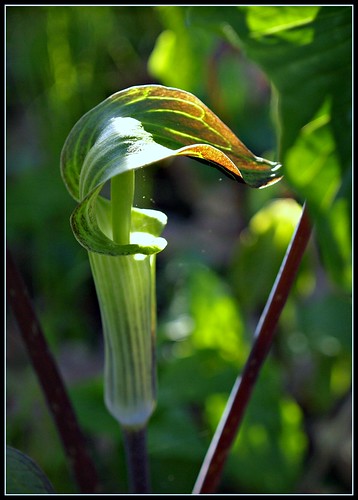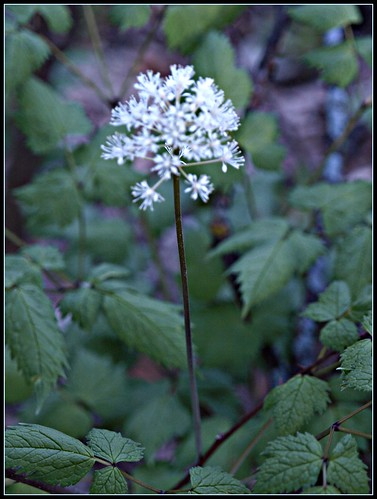I have collected seed from these columbine plants and grown them every year since I have had a home of my own. The original plants were cultivated by my grandfather in Illinois. I gathered seeds from his plants beginning in 1979 and have grown them in several gardens in Milwaukee and Madison.
They bloom from late May through early July and are a favorite with long-tongued bees and the hummingbirds.
Even the bumblebees get in the act to get the nectar, though they cheat. Since they can’t reach the nectar because of the columbine’s long slender tubes, they bite holes in the ends of the spurs to get some of the sweet stuff. More than one way to beat Mother Nature . . .

